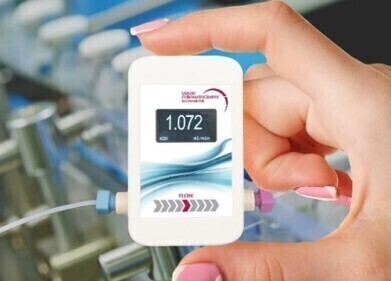HPLC, UHPLC
Plug 'n' Play - Improving the Chromatography-Spectrometer Link
Aug 12 2015
As mass spectrometers (MS) enter main-stream laboratory testing, it is important to be able to supply the instruments with samples that are fit-for-purpose. In many laboratories MS is used in tandem with liquid chromatography (LC) — especially in pharmaceutical and biomedical applications — taking advantage of LC’s ability to separate complex biological samples into individual components.
One of the key requirements of an LC-MS system is that the chromatography side is simple to run and produces reliable separations, as these are the key to getting good quality MS data. In traditional high-performance liquid chromatography (HPLC) this is relatively straightforward — modern instruments and systems are simple to run and maintain between runs. But increasingly, researchers have to analyse ever smaller samples and lower flowrates — and this can reduce the effectiveness of a traditional HPLC system in producing a high quality sample ready for the MS to analyse.
Nanoscale chromatography
A solution was found in micro- or nanoscale liquid chromatography set-ups which can use smaller samples. Columns in HPLC have an internal diameter (i.d.) of around 4.0 mm and use a flow rate of 1.0 mL/min, in nanoscale LC the column i.d. is typically less than 0.1 mm and a much lower flow rate is used. The low flowrate has the effect of increasing the sensitivity in the mass spectrometer — meaning lower detection and quantitation limits can be achieved.
One of the main advantages in using nano-LC — besides the small sample size and increased sensitivity — is the significant reduction in the volume of reagents used. Many of the reagents used in chromatography mobile phases are toxic, and any reduction in their use is to be welcomed. The reduction in the volume of reagents used also means that there is a reduction in the waste generated — which can help towards a company’s green credentials and reduce the cost of waste disposal, particularly any toxic elements.
Plug ‘n’ play chromatography?
The change to nanoscale chromatography is not simple to make however — the instruments and set-up is technically more difficult to handle than standard HPLC instruments — which has limited its impact in routine laboratory applications.
A product launched in 2014 claims to have all the advantages of nano-LC, but with an approach that makes it relatively simple to use. A module the size of a smart phone contains all the chromatography kit, including column, and plugs into the MS instrument, eliminating some of the difficult technical aspects of nano-LC. More information about this system can be found in this article from Chromatography Today, Increasing Mass Spec Sensitivity with the Novel ionKey/MS System, Making Microscale LC-MS Routine, Robust, and Accessible to Scientists at any Skill Level.
Image by Evan-Amos via Wikimedia Commons
Digital Edition
Chromatography Today - Buyers' Guide 2022
October 2023
In This Edition Modern & Practical Applications - Accelerating ADC Development with Mass Spectrometry - Implementing High-Resolution Ion Mobility into Peptide Mapping Workflows Chromatogr...
View all digital editions
Events
Jan 20 2025 Amsterdam, Netherlands
Feb 03 2025 Dubai, UAE
Feb 05 2025 Guangzhou, China
Mar 01 2025 Boston, MA, USA
Mar 04 2025 Berlin, Germany



.jpg)








